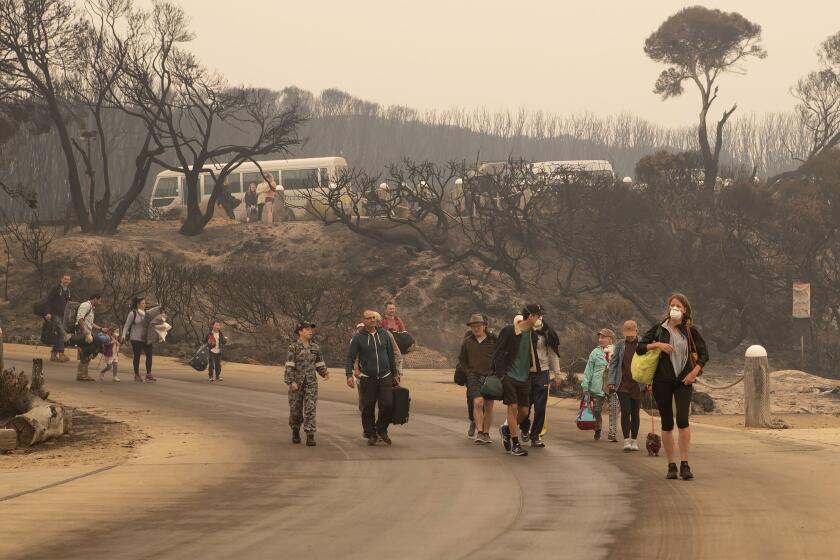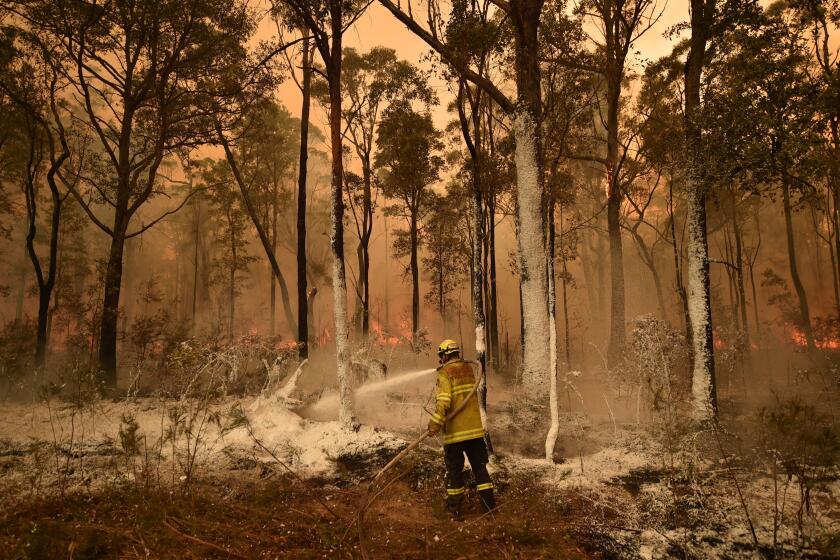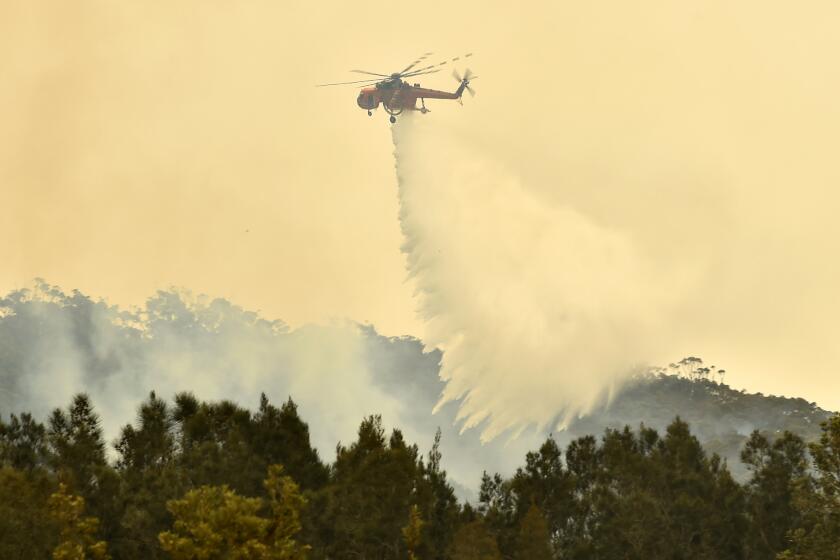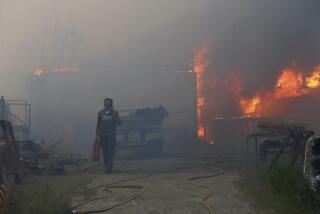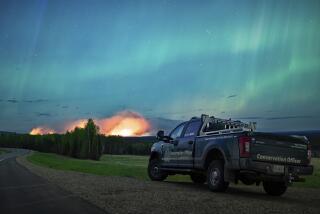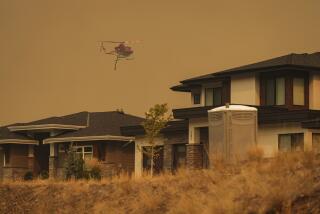In Australia, dawn breaks over a blackened landscape
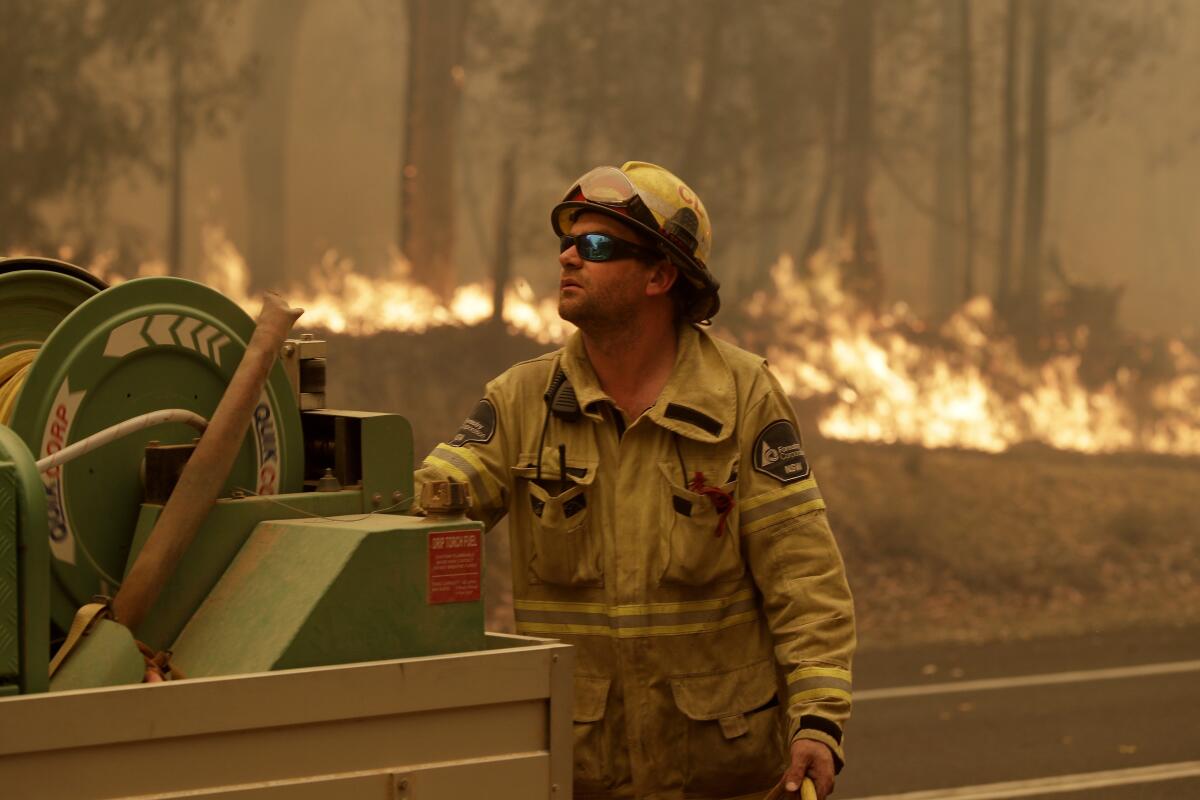
- Share via
SYDNEY — Milder temperatures Sunday brought hope of a respite from wildfires that have ravaged three Australian states, claiming 24 lives and destroying almost 2,000 homes.
Saturday was a day of high tension as soaring temperatures and strong winds fanned fires in New South Wales, Victoria and South Australia, forcing thousands to flee and bringing flames to the suburban fringes of Sydney.
Thousands of firefighters fought to contain the blazes but many continued to burn out of control, threatening to wipe out rural townships and causing almost incalculable damage to property and wildlife.
As dawn broke over a blackened landscape Sunday, a picture emerged of disaster of unprecedented scale. The Rural Fire Service said 150 fires were active in New South Wales, 64 of them uncontrolled.
“It’s not something we have experienced before,” New South Wales Premier Gladys Berejiklian said.
“The weather activity we’re seeing, the extent and spread of the fires, the speed at which they’re [moving], the way they are attacking communities that have never seen fire is unprecedented,” she said.
She said that the extent of the bushfire season was the largest in living memory, “and many experts have been around much longer than I have, who fought fires and observed circumstances. All agree we’re in uncharted territory.”
The latest fatality occurred at Batlow in New South Wales, where a 47-year-old man died Saturday night while defending the home of a friend from encroaching fires. New South Wales police said the man was found unconscious in a vehicle and could not be revived.
Earlier Saturday, a father and son who were battling flames for two days died on a highway on Kangaroo Island, off South Australia state. Authorities identified them as Dick Lang, a 78-year-old acclaimed bush pilot and outback safari operator, and his 43-year-old son, Clayton. Their family said their losses left them “heartbroken and reeling from this double tragedy.”
Lang, known as “Desert Dick,” led tours for travelers throughout Australia and other countries.
“The weather conditions have improved in New South Wales and Victoria but there are still many fires raging and there’s a significant firefighting effort continuing,” Prime Minister Scott Morrison said during a news conference Sunday.
He announced the establishment of a national bushfire recovery agency, headed by former Australian Federal Police Commissioner Andrew Colvin, which would provide support payments to small businesses and help repair damaged infrastructure.
The deadly wildfires, which have been raging since September, have already burned about 12.35 million acres of land. That’s more than any one year in the U.S. since Harry Truman was president.
The early and devastating start to Australia’s summer wildfires has also been catastrophic for the country’s wildlife, likely killing nearly 500 million birds, reptiles and mammals in New South Wales alone, Sydney University ecologist Chris Dickman told the Sydney Morning Herald. Frogs, bats and insects are excluded from his estimate, making the toll on animals much greater.
Experts say climate changehas exacerbated the unprecedented wildfires around the world. Morrison has been criticized for his repeated refusal to say climate change is impacting the fires, instead deeming them a natural disaster.
For the first time in Australia’s history, 3,000 army, navy and air force reservists have been called up and will be thrown into the battle against the fires.
Morrison announced the decision Saturday and committed almost $14 million to lease four firefighting aircraft for the duration of the wildfire crisis.
But even those announcements failed to quiet criticism of Morrison’s leadership and slow response to the fires. Instead, they provoked new anger among some at the forefront of the firefight who said they were blindsided by the prime minister’s decision.
Rural Fire Service Commissioner Shane Fitzsimmons, who is leading the fight in New South Wales, said he learned of the deployment of reservists through media reports.
“It is fair to say it was disappointing and some surprise to hear about these things through public announcements in the middle of what was one of our worst days this season with the second-highest number of concurrent emergency warning fires ever in the history of New South Wales,” he said.
Morrison was also forced to defend a video posted on social media Saturday, which promoted the deployment of reservists and the government’s response to the wildfires.
The nonpartisan Australia Defense Assn. said the video breached rules around political advertising.
“Party-political advertising milking ADF [Australian Defence Force] support to civil agencies fighting bushfires is a clear breach of the non-partisanship convention applying to both the ADF and ministers/MPs,” the association said.
In a tweet, Morrison said, “The video message simply communicates the Government’s policy decisions and the actions the Government is undertaking to the public.”
One of the largest evacuations in Australia’s history is underway ahead of hot weather and strong winds that are forecast to worsen devastating wildfires raging across the country
For the first time since 2010, the federal government is sending U.S. firefighters, including some from California, to help combat Australia’s wildfires.
Anger erupts over government response as fires kill at least 8 people this week and destroy hundreds of homes on the New South Wales southern coast.
Australia deployed military ships and aircraft Wednesday to help communities ravaged by apocalyptic wildfires that have left at least 17 people dead nationwide and sent thousands of residents and tourists fleeing to the shoreline.
More to Read
Sign up for Essential California
The most important California stories and recommendations in your inbox every morning.
You may occasionally receive promotional content from the Los Angeles Times.
